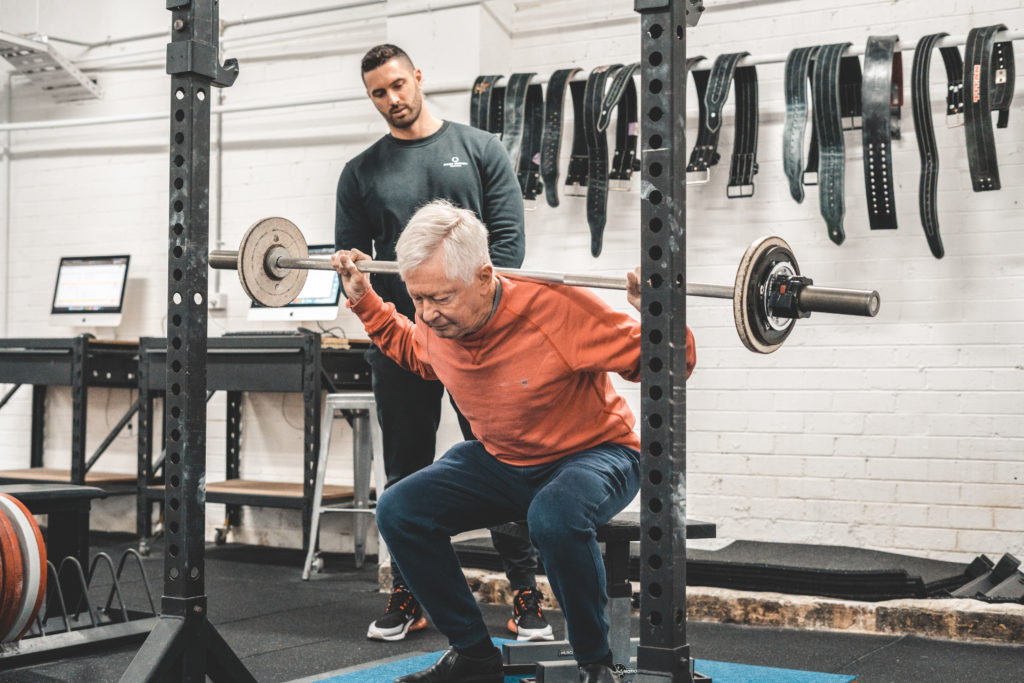Social media can be both a blessing and a curse. Whether misleading by accident or design, not all health and fitness advice online is accurate. Staying sharp to common myths can help you avoid pitfalls that stall progress. We also believe that having a basic understanding of how the body responds to exercise and nutrition can help you cut through the noise. If you want to be Stronger For Life, you need to train on a solid foundation. With that in mind, here are three common myths alongside a key principle to take away from each.
Which exercise burns the most fat?
Exercise requires energy. That much is obvious. Interestingly, research has found a high prevalence of both physical activity and sedentary behaviour in individuals with obesity¹. This doesn’t mean the relationship is explicitly causal. The energy burned during exercise is surprisingly low. In fact, physical activity may account for less than 50% of your total daily energy expenditure. Variables such as height, weight, and biological sex all play a role². Thinking critically, most gym exercises don’t last long. A set might take 30–45 seconds and be repeated just a few times. A full session may last 45–60 minutes—only around 1.8% of your total time each week. Yes, fat can be used for energy during exercise, but chronic activity patterns and overall diet matter far more than any single workout.
Principle: Long-term habits, not single workouts, drive body composition changes.
What is the single most effective exercise?
I wish things were that simple but unfortunately, there’s no single “best” exercise. The first question we need to ask is: effective for what? Are we aiming to build strength, gain muscle, improve heart health, or something else entirely? Instead of chasing hypotheticals, let’s think practically: why limit ourselves to just one move? Resistance training is a proven tool for increasing strength, muscle mass, and bone density, especially as we age³. Exercises that load the target muscle effectively, can be done safely, and fit your individual structure are all valid choices. A well-balanced program should train all major muscle groups across the week. And while high-effort movements like burpees can improve general fitness, they often fall short when compared to monostructural cardio like running, or traditional resistance work like leg presses or bench presses.
Principle: Choose effective, repeatable exercises that suit your goals and your body.
Is it okay to exercise everyday?
Regular movement is encouraged, and, in some cases, daily training is totally fine. National guidelines recommend aiming for at least 150 minutes of moderate-intensity activity per week, with resistance training for all major muscle groups at least twice⁴. Depending on your training split, that might mean moving every day. The real question isn’t if you can train daily, but how well your body can recover from it. Recovery depends on your current fitness level, past training exposure, and other life stressors. Some sessions (like heavy lifting close to muscular failure) require more recovery than others (like a walk or easy cardio). It is a myth however that someone needs 24 – 48 hours of fully recovery between training sessions. Rather, focus on balancing intensity and prioritising key sessions across your week. Here’s one example:
Mon/Wed/Fri: Strength
Tues/Thurs: Cardio
Sat: Group fitness
Sun: Long walk
Principle: With the right structure and load, daily training is safe and effective
Make Principle-based Progress
In a world full of clickbait workouts and flashy “fitness hacks,” cutting through the noise requires more than willpower. It takes principles. Today we’ve unpacked three common myths. As we’ve shown, it’s not about which exercise burns the most fat, the one “perfect” movement, or whether training every day is right or wrong. It’s about understanding context: how your body responds, how to prioritise recovery, and how to build a plan that actually works for you. Sustainable training isn’t built on extremes Instead it’s built on habits, structure, and progression. If you want to be Stronger For Life, focus less on chasing shortcuts and more on consistent behaviours that move you toward your goal. That’s where real progress lives. If you’re feeling stuck or unsure where to begin, our expert coaches can help you untangle the myths and build a plan grounded in principles, not gimmicks. Get in touch with us today.
References:
- Sedentary behavior, physical inactivity, abdominal obesity and obesity in adults and older adults: A systematic review and meta-analysis – ScienceDirect
- Physical activity and physical activity induced energy expenditure in humans: measurement, determinants, and effects – PMC
- Exercise Programs for Muscle Mass, Muscle Strength and Physical Performance in Older Adults with Sarcopenia: A Systematic Review and Meta-Analysis – PMC
- Physical activity

